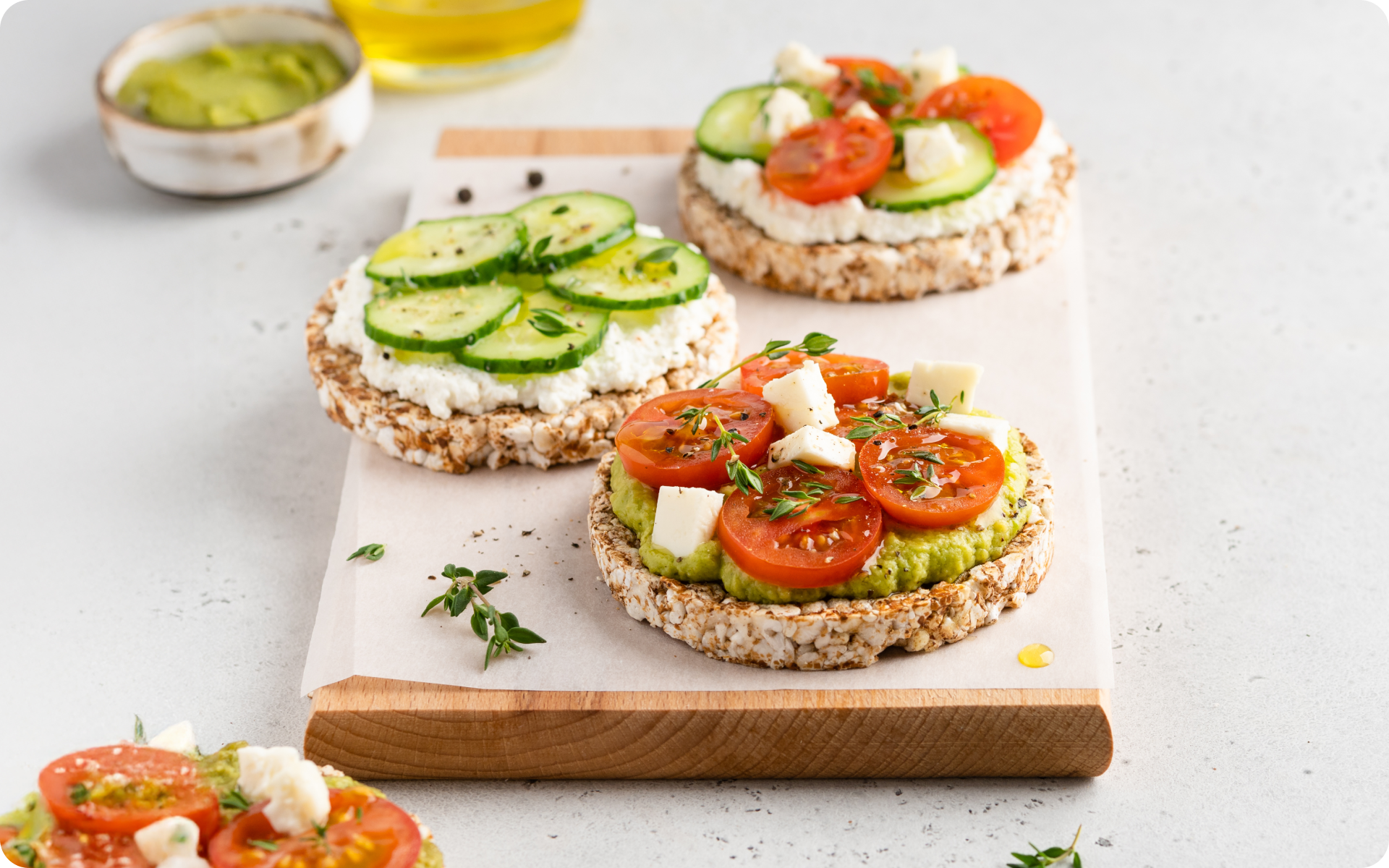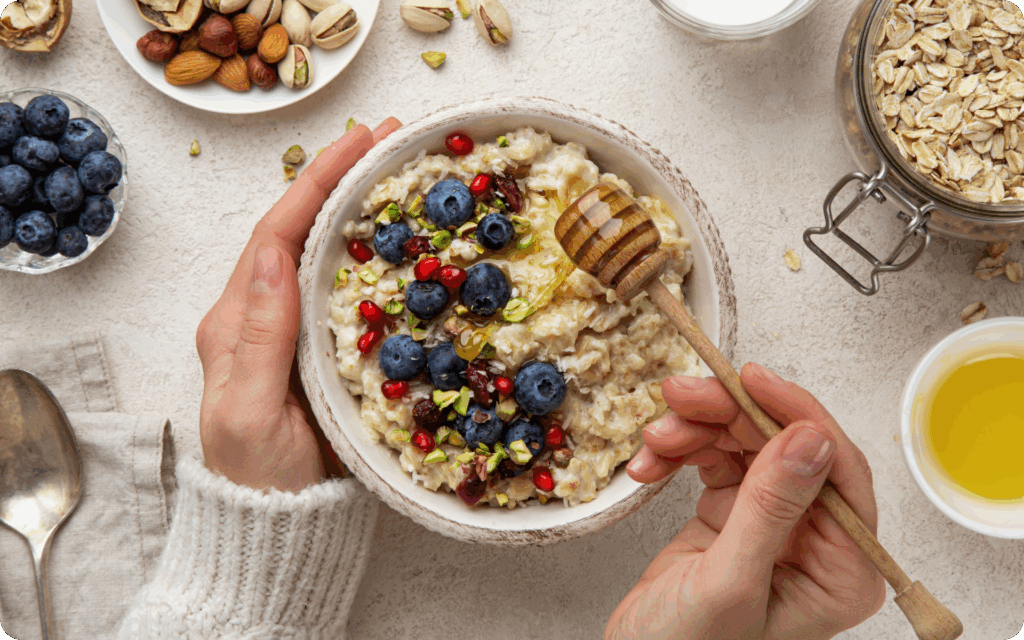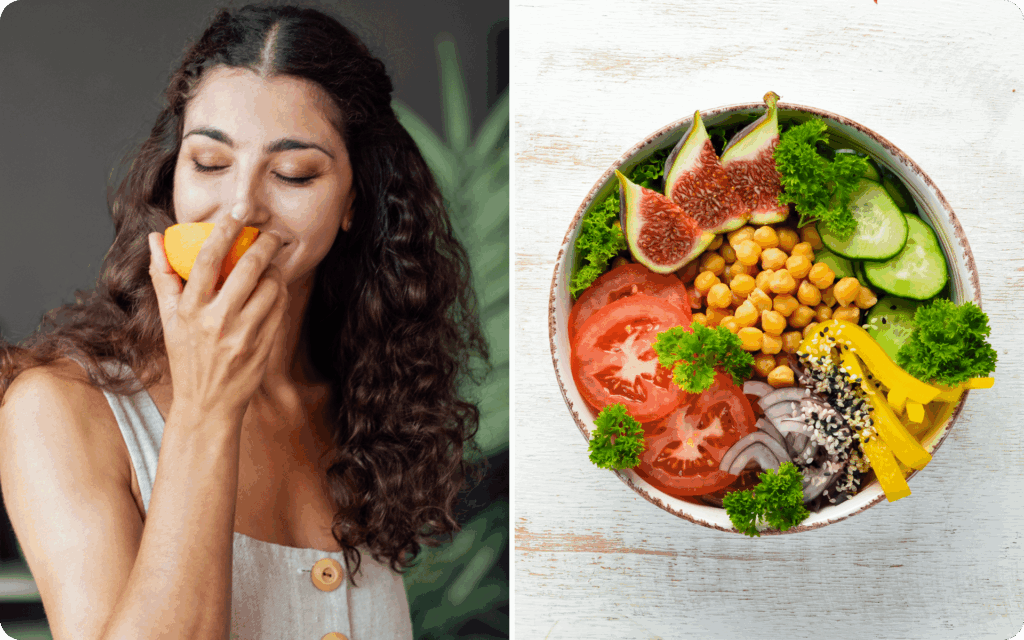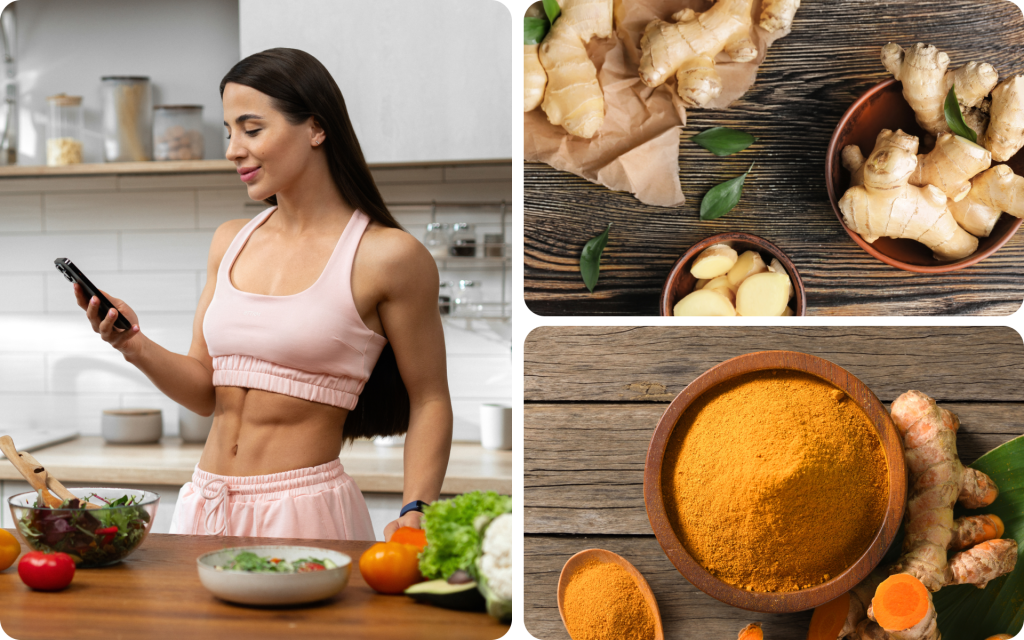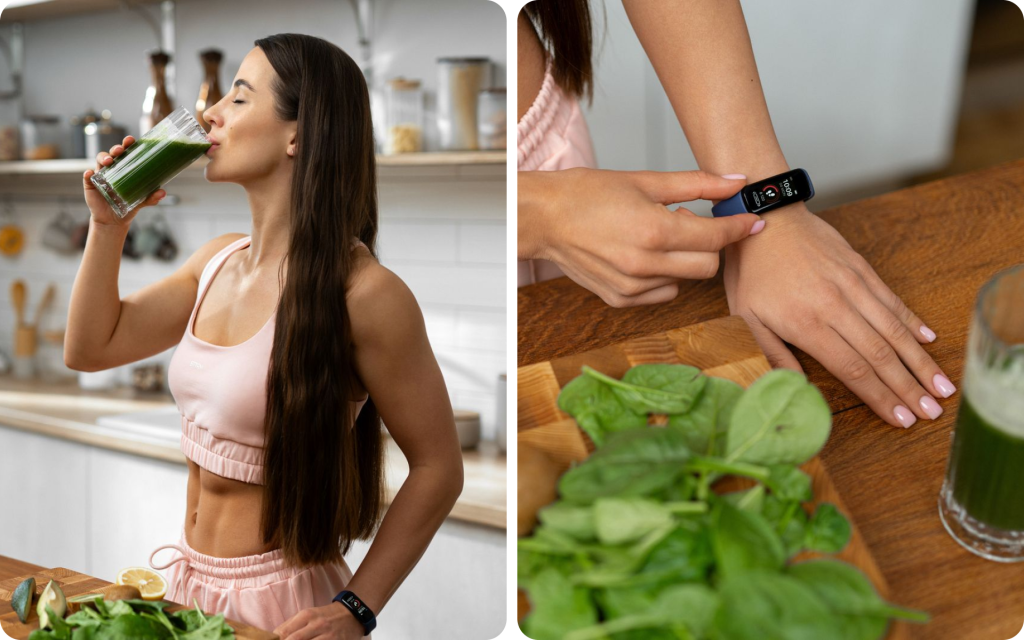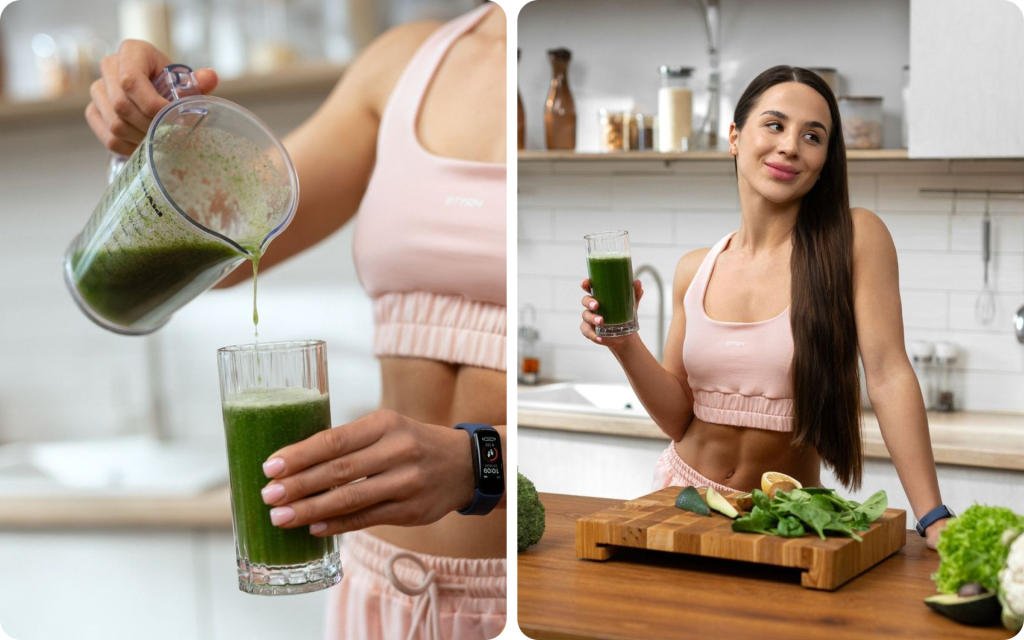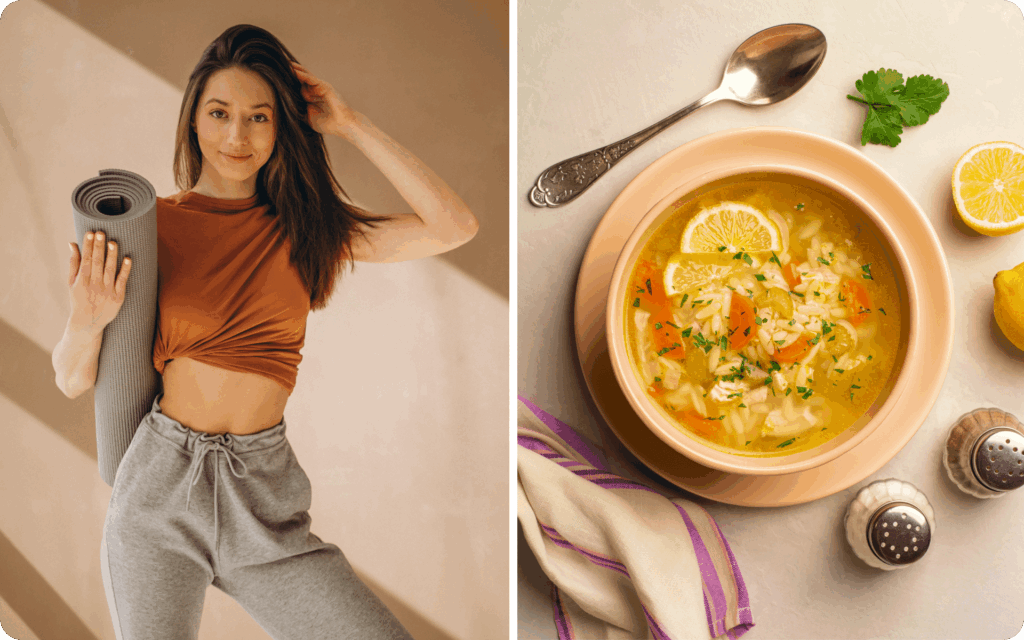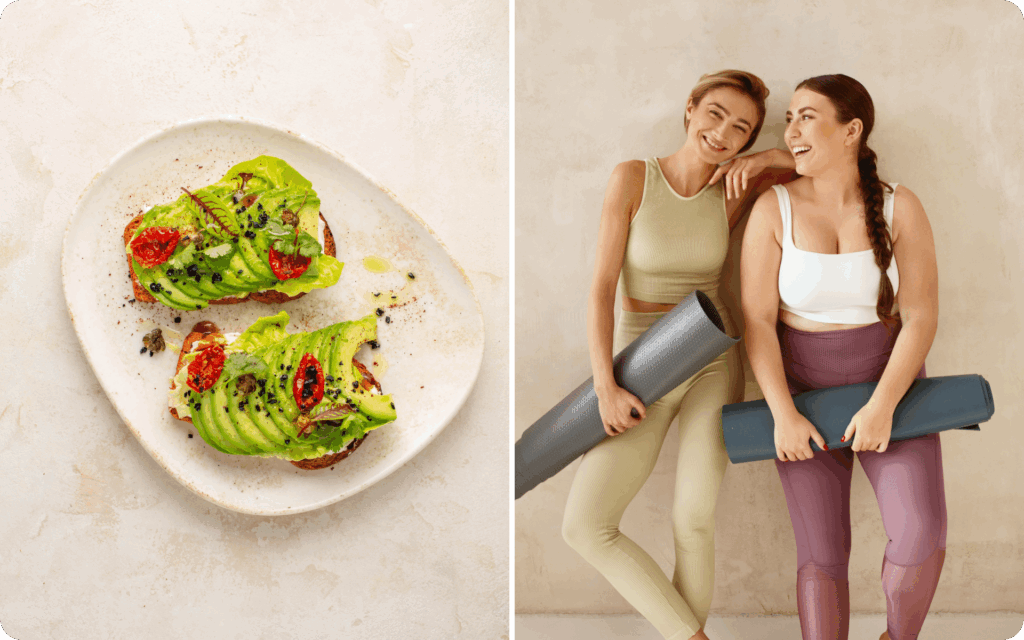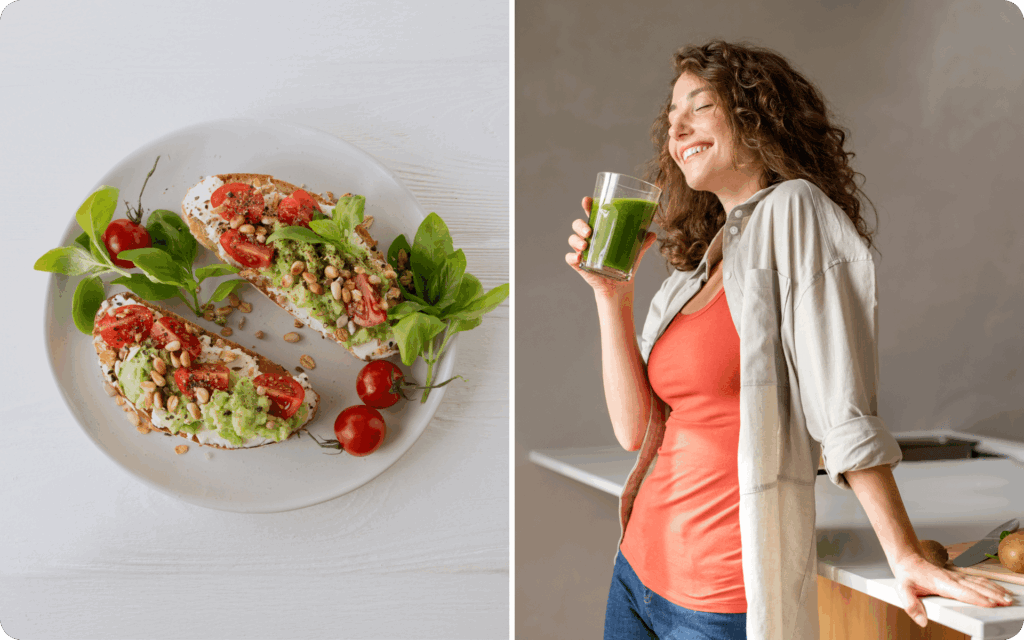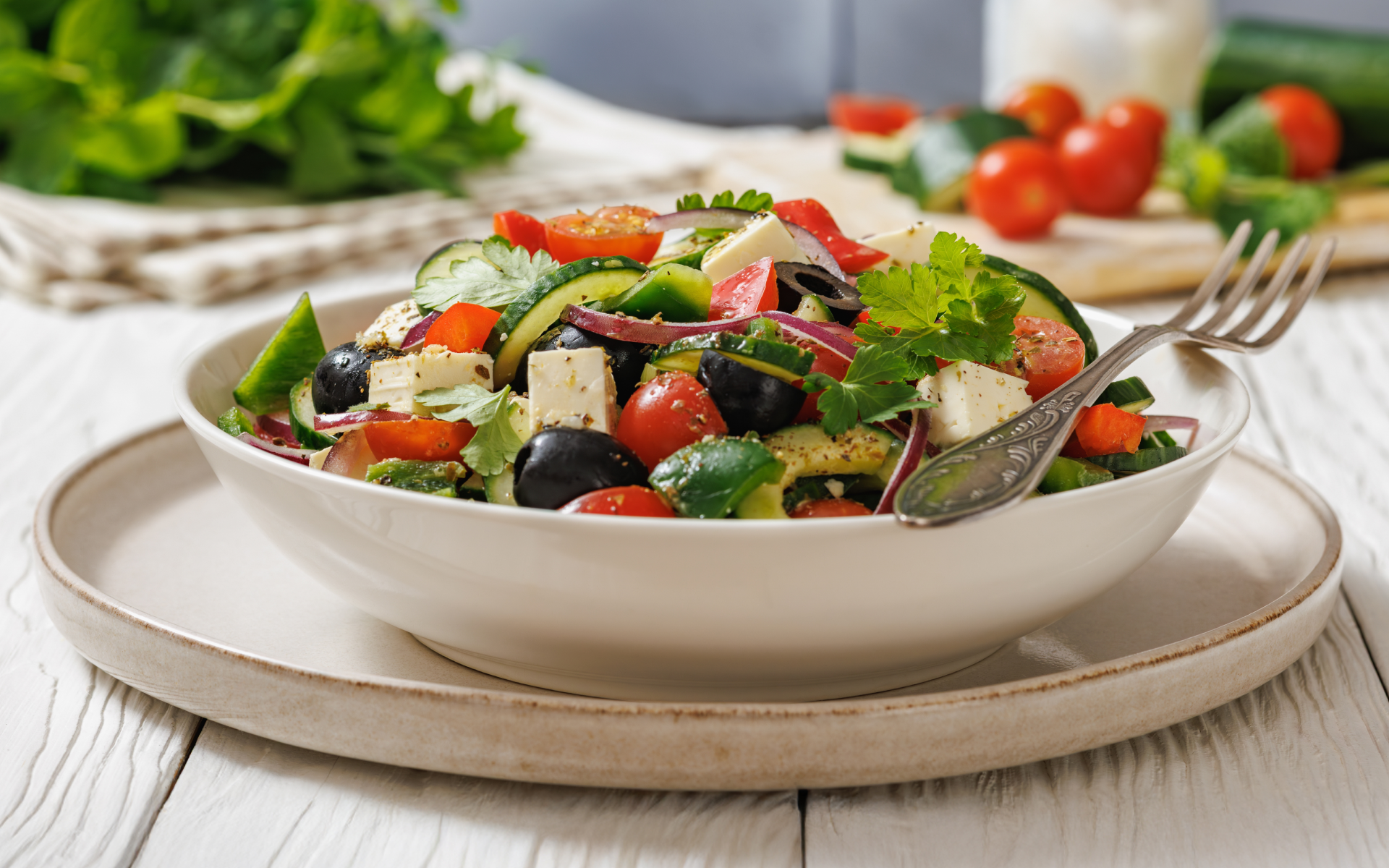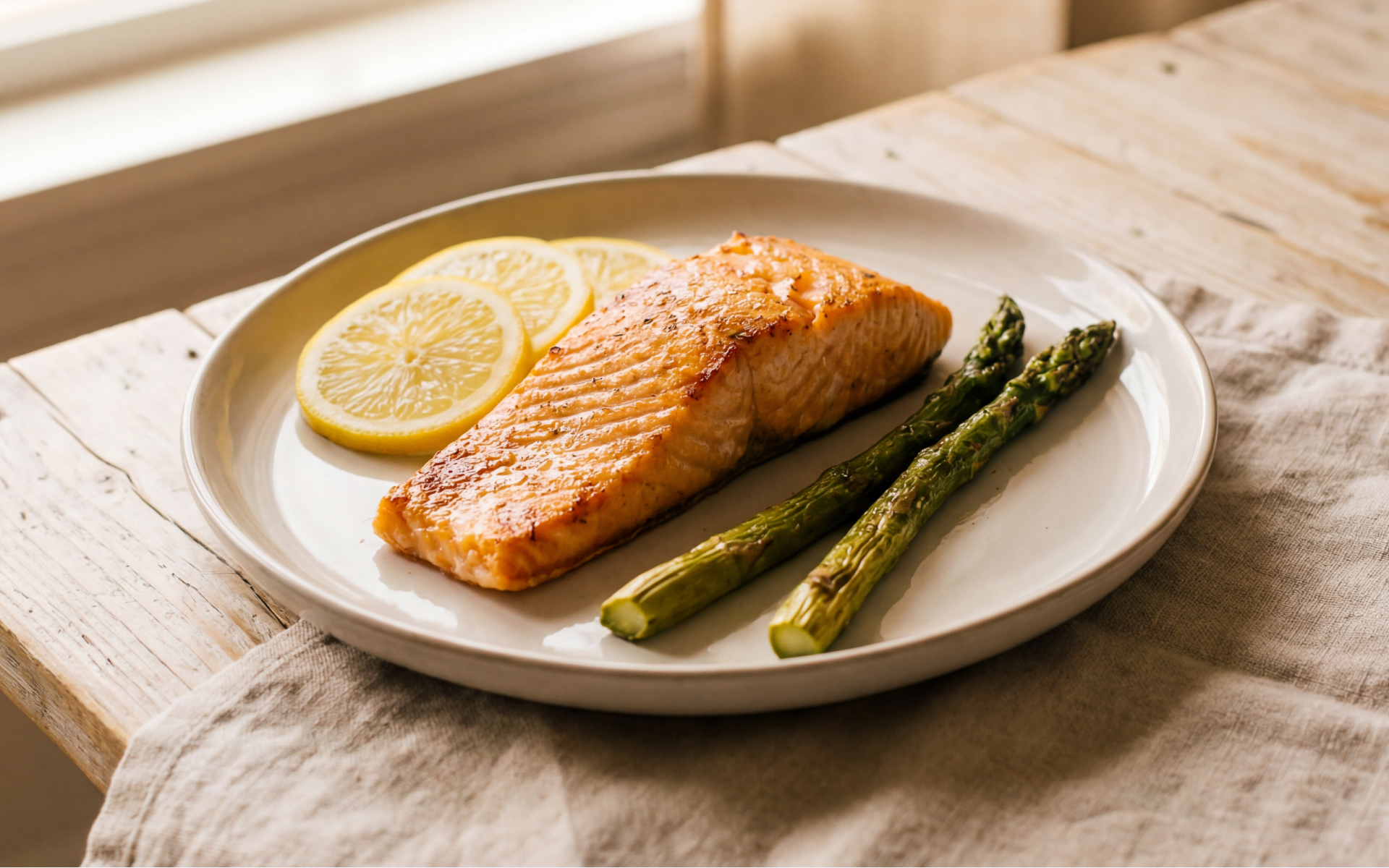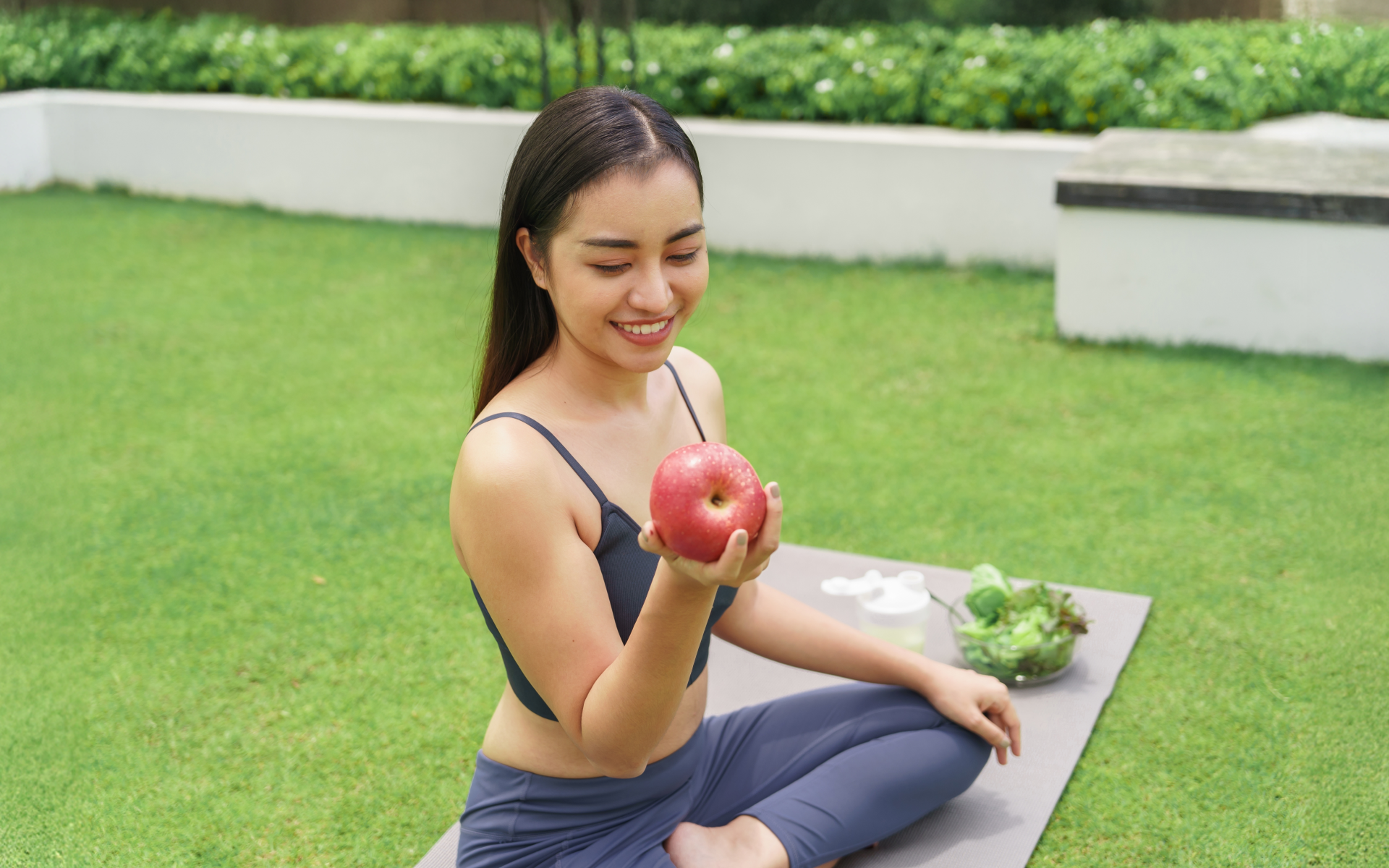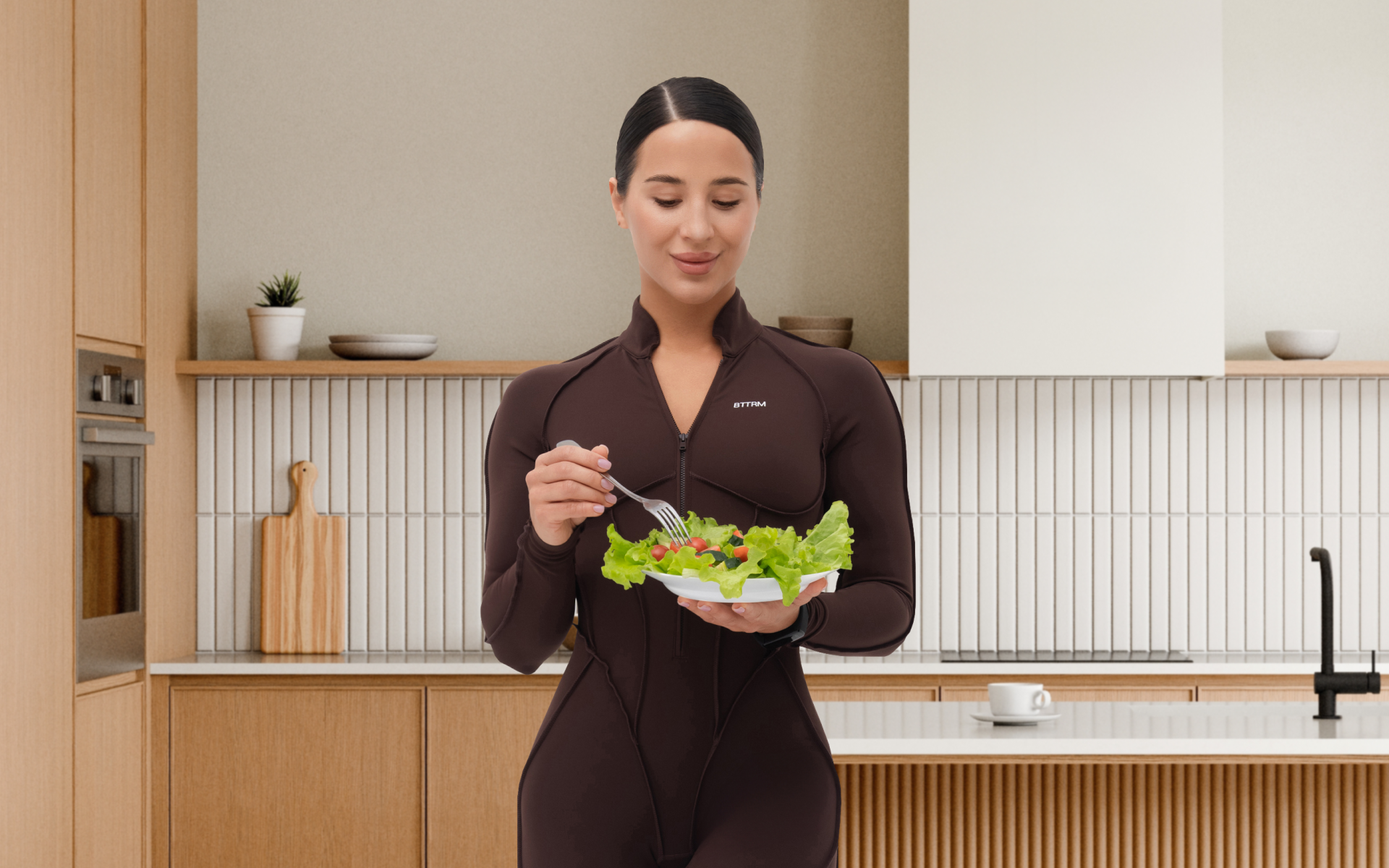Are you bored with your usual meals? Do you want to come up with something unique, but simple, nutritious, and high in protein? Then, this plant-based weekly meal plan may be just what you need. Pairing the right seasonings with diverse whole foods can make all the difference.
Batch-cooking staples like quinoa and beans can save time and keep the flavors interesting. Protein in the form of soy products, legumes, grains, nuts, and seeds creates filling dishes that provide a hefty dose of energy.
In this guide, we will show you how to diversify your plant-based diet and create meals that promote satiety and digestion, while offering a variety of flavors.
What Makes A Plant-Based Weekly Meal Plan Nutritious?
A nutritious plant-based weekly meal plan relies on whole foods and a variety of ingredients. It uses vegetables and fruits to add color to your dish and provide antioxidants, minerals, and vitamins. Plant-based meals should contain enough calories, proteins, and beneficial compounds, such as vitamin D and vitamin B12 (1).
Whole grains, such as quinoa, oats, brown rice, and buckwheat, contain fiber that can promote satiety, improve digestion, and boost energy.
Some types of fiber act as probiotics, stimulating the growth of beneficial gut bacteria, while others help promote bowel regularity (2).
Legumes, such as lentils and beans, are among the healthiest ingredients for adding protein and dietary fiber to your meals (3). Because of their “meaty texture”, many people use them instead of traditional animal protein.
Vegetables are a significant component of any plant-based diet.
BetterMe: Health Coaching app helps you achieve your body goals with ease and efficiency by helping to choose proper meal plans and effective workouts. Start using our app and you will see good results in a short time.
With options such as leafy greens, bell peppers, mushrooms, broccoli, eggplant, and many more, you can enjoy lower amounts of saturated fat while increasing your fiber intake, mineral, and vitamin intake (4).
Fruits add a natural sweetness to your meal alongside insoluble and soluble fiber, such as pectin and cellulose. Despite their natural sugar content, fruits like citrus, berries, prunes, and apples can promote feelings of fullness, reduce cholesterol, and help balance blood sugar levels (5).
Nuts and seeds add a unique crunch to your dishes, complemented by healthy fats, dietary fiber, and protein. Studies have suggested that consuming a handful of nuts and/or seeds daily may help reduce the risk of cardiovascular disease.
These nuts and seeds contain mostly unsaturated fats, which can benefit the blood vessels and aid with inflammation (6, 7).
Read More: Plant-Based Diet Meal Plan: Giving A Meat-Free Lifestyle A Try
How To Build A Not Boring Plant-Based Weekly Plan?
A plant-based weekly meal plan for beginners will involve mixing up the spices, sauces, and seasonings to keep things interesting.
When preparing plant-based diet meals, consider marinating your vegetables with spices such as garlic, onion powder, red pepper flakes, smoked paprika, ginger, and coriander. You can toast whole spices in the pan to bring out their flavors before adding the food.
You can also add more low-calorie sauces, such as chili garlic sauce, lemon-herb vinaigrette, and salsa, or other plant-based sauces. Layering the flavors allows for various combinations that you can adjust to your liking.
- Marinate Your Vegetables
Marinating is the process of soaking vegetables in a liquid mixture of different seasonings. The acids in the marinade tenderize some vegetables while enhancing their flavor and changing their texture.
The process also breaks down tough fibrous bonds in the food.
Here are some examples of a plant-based diet:
- Mediterranean marinade: Most Mediterranean-inspired meals use olive oil, oregano, garlic, and lemon to create a liquid mixture.
It works well for marinating bell peppers, eggplants, cherry tomatoes, mushrooms, and artichoke hearts (8).
- Ginger-soy marinade: Whisk together rice vinegar, soy sauce, garlic, sesame oil, green onions, lemon juice, and ginger to get a delicious marinade with bold flavors.
You can use it to season broccoli, mushrooms, carrots, and snap peas, and it pairs well with tofu or tempeh, both of which are excellent sources of protein (9).
- Balsamic-garlic marinade: Combine balsamic vinegar with Italian seasoning, garlic, and olive oil to season your salad in just minutes.
This easy marinade utilizes simple ingredients and is perfect for various types of recipes, such as root and cruciferous vegetables (10).
- Cilantro-Lime Marinade: Mix garlic, cilantro, lime, olive oil, cumin, chili powder, jalapeno, salt, and pepper to add a citrusy flavor to your cauliflower, corn, mushrooms, potatoes, and bell peppers.
You can also use a cilantro-lime marinade as a salad dressing for green salads, such as those featuring avocado, lettuce, or cabbage (11).
When it comes to weight loss, progress is made by inches, not miles, so it’s much harder to track and a lot easier to give up. The BetterMe: Health Coaching app is your personal trainer, nutritionist, and support system all in one. Start using our app to stay on track and hold yourself accountable!
- Use Low-Calorie Sauces
If you are planning a plant-based weekly meal plan for weight loss and need to cut calories, consider using low-calorie sauces as effective flavor boosters or marinades.
By making them from scratch, you have control over the amount of sugar and salt used, which can benefit your fitness goals.
These low-calorie sauces include:
- Salsa: You can use salsa as a topping or a sauce, such as when roasting vegetables or spreading it over tacos, sandwiches, and fajitas.
It contains herbs, peppers, onions, and tomatoes, which tend to be very low in calories (12).
- Hot sauces: These are efficient ingredients for stir-frying, grilling, marinating, and roasting tofu, as well as vegetables like cauliflower, broccoli, and mushrooms, and tempeh. Although some sauces contain sugar, they add plenty of flavor with fewer calories (13).
- Lemon-herb vinaigrette: This is essentially a blend of lemon juice and apple cider vinegar with added spices, making it a versatile option for marinating a wide range of vegetables. You can use it for asparagus, zucchini, and leafy greens (14).
- Miso-based marinades: Miso paste and rice vinegar can create a flavorful, low-calorie marinade. It adds complex flavor to tempeh, cabbage, potatoes, carrots, or bok choy. Season it with different ingredients to intensify the flavor (15).
- Add More Plant-Based Yogurt Sauces
Plant-based yogurts, also known as non-dairy or vegan yogurts, are excellent marinades for a variety of vegetables, including potatoes, broccoli, mushrooms, bell peppers, and asparagus.
The most versatile plant-based yogurts include those made from:
- Oat
- Soy
- Hemp
- Almond
- Coconut
- Cashew
- Pea protein
A study found that plant-based yogurts offer higher amounts of dietary fiber and less salt and sugar than their dairy counterparts. However, dairy products provide more calcium, protein, and potassium (16).
To increase your protein intake, consider serving vegan yogurt-based sauces with marinated tofu, accompanied by toppings such as chia seeds, hemp seeds, flax seeds, and sunflower seeds.
If you need ideas for new recipes to tailor to your specific fitness routine, check out the BetterMe app to help you:
- Customize your diet plan.
- Track calories
- Create effective workouts.
Read More: 30-Day Plant-Based Diet Plan: How Consuming More Plant-Based Foods Can Boost Your Health
Can A Plant-Based Weekly Plan Provide Enough Protein?
A well-planned, plant-based weekly meal plan can provide enough protein, even if you don’t eat meat. You need a balance of accessible ingredients that offer vitamins and minerals.
What is a nutrient-packed plant-based weekly meal plan?
It should include a variety of legumes, soy products, whole grains, nuts, and seeds.
Here are a couple of meals that are all plant-based and an excellent source of protein.
Feel free to swap ingredients according to your preferences or based on what is readily available or in season.
Day 1
- Breakfast: Whole grain bread with scrambled tofu.
- Lunch: Green bean and farro salad with smoked tofu.
- Dinner: Coconut curry with chickpeas and vegetables.
Day 2
- Breakfast: Overnight chia pudding with berries.
- Lunch: White Bean and Quinoa Salad with Thyme.
- Dinner: Lentil soup with a variety of vegetables.
Day 3
- Breakfast: French toast made with soy milk, topped with cherry tomatoes and garlic.
- Lunch: Sheet pan veggies and chickpeas with tahini dressing.
- Dinner: Cauliflower, black bean, and sweet potato tacos topped with avocado and salsa.
Day 4
- Breakfast: Peanut butter and jelly with carrots and an apple.
- Lunch: Black bean burger with salad.
- Dinner: Vegetable and hummus wrap.
Day 5
- Breakfast: Avocado toast with fresh lemonade.
- Lunch: Whole grain pasta with white beans and spinach.
- Dinner: Pita with hummus, falafel, and crunchy vegetables.
Day 6
- Breakfast: Scrambled tofu with green onions and mushrooms on whole wheat toast.
- Lunch: Edamame bean salad with soy sauce, rice, and red peppers.
- Dinner: Vegan Greek salad with butter beans, red onions, cherry tomatoes, cucumbers, and bell peppers.
Day 7
- Breakfast: Green smoothie with spinach or kale, wheat toast with nut butter.
- Lunch: Vegan tuna pasta with sweetcorn.
- Dinner: Mediterranean soup with assorted beans and barley.
Our previous post goes into great detail about the 10 plant-based diet recipes for beginners.
What’s The Easiest Way To Meal Prep Plant-Based Meals?
The simplest and fastest method to prepare plant-based meals is to cook in batches.
Cook large portions of grains, like brown rice or farro. Pair them with proteins, like tofu, tempeh, or chickpeas, and include a variety of roasted vegetables.
Freeze the cooked meals in portions and serve them with sauces and dressings on the side. If you’re curious about 20 plant-based breakfast ideas, check out our earlier article.
The BetterMe: Health Coaching app will provide you with a host of fat-frying fitness routines that’ll scare the extra pounds away and turn your body into a masterpiece! Get your life moving in the right direction with BetterMe!
What Plant-Based Snacks Keep You Full Between Meals?
Looking for snacks that would fit your plant-based weekly meal plan? The ideal options are light and savory snacks rich in nutrients.
For example, you can make:
- Carrots with hummus
- Raspberry vegan muffins
- Peanut butter crackers with celery
- Guacamole and whole-grain tortilla chips
These provide protein, healthy fats, fiber, and vitamins. Making them at home can help reduce calories and support your weight goals.
Struggling to pick the right snacks? The BetterMe app can guide you to the best, plant-based snacks that fit your meal plan. It provides delicious and nutritious snack ideas to support your fitness goals. In addition to your diet, the app can show you exactly which workouts can help you burn the calories you eat and maintain a healthy weight with every bite. For more details about the plant-based foods list, take a look at our prior publication.
How To Dine Out While Following This Plan?
If you plan to dine out on a plant-based diet, you might want to research the places or restaurants you will eat at ahead of time. This preparation will provide you with a clear guideline of the foods a restaurant serves and the ingredients it uses.
Here are some tips you can use for dining out:
- Choose vegan-friendly cuisines with plant-based options, such as vegetable sushi rolls, lentil stews, and tofu stir-fries.
- Customize existing dishes, like replacing the salad cheese with nuts.
- Review the menu before arriving at the restaurant and take note of your favorite options that align with your plant-based goals. Refer to your notes when ordering.
- Bring snacks, like a bag of dried fruit, nuts, seeds, and vegan protein bars.
Overall, it is best to avoid heavily processed foods and opt for whole foods instead, such as whole grains, vegetables, fruits, nuts, and seeds. You can incorporate entire foods into every meal and practice portion control to avoid overeating.
Yes, plant-based foods like tofu, edamame, beans, lentils, nuts, and seeds are just as beneficial for building muscle as animal-based products. Balancing protein intake throughout every meal and consuming a variety of plant-based sources can provide complete protein nutrition (17). You can eat frozen veggies; just keep in mind that some veggies freeze better than others. For example, vegetables with high water content, such as cucumbers, radishes, and bean sprouts, tend to become mushy after freezing. Those with lower water content freeze well, such as carrots, cauliflower, and broccoli. Veggies you buy frozen are not only convenient, they are frozen at their peak quality and nutrient density, making them highly nutritious. You can replace the eggs with tofu, mashed banana, nut butter, or other ingredients, depending on the application. You can scramble tofu, mashed banana can act as a binder in some baked goods, and nut butter can provide protein that you may have otherwise gotten from eggs. There can be many reasons for weight gain, even when eating only plant-based foods. For example, you may consume more calories than you burn, prioritize highly processed products over whole foods, or consume excessive amounts of sugar (18). Frequently Asked Questions
Can you build muscle on a plant-based diet?
Are frozen veggies okay for plant-based meal prep?
How to replace eggs in plant-based breakfasts?
Why do some people gain weight on plant-based diets?
The Bottom Line
You don’t have to eat bland foods on a plant-based diet. Spices and many condiments can add flavor to every dish without significantly increasing calorie intake.
The goal is to use a variety of balanced ingredients, such as whole grains, fruits, vegetables, legumes, nuts, and seeds, and then mix and match these ingredients to create diverse meals every day.
Start by marinating the vegetables before you cook them, serve them with low-calorie sauces, and add more plant-based yogurts. You can use this weekly meal plan as a general guideline and tailor it to your specific needs and personal preferences.
DISCLAIMER:
This article is intended for general informational purposes only and does not serve to address individual circumstances. It is not a substitute for professional advice or help and should not be relied on for making any kind of decision-making. Any action taken as a direct or indirect result of the information in this article is entirely at your own risk and is your sole responsibility.
BetterMe, its content staff, and its medical advisors accept no responsibility for inaccuracies, errors, misstatements, inconsistencies, or omissions and specifically disclaim any liability, loss or risk, personal, professional or otherwise, which may be incurred as a consequence, directly or indirectly, of the use and/or application of any content.
You should always seek the advice of your physician or other qualified health provider with any questions you may have regarding a medical condition or your specific situation. Never disregard professional medical advice or delay seeking it because of BetterMe content. If you suspect or think you may have a medical emergency, call your doctor.
SOURCES:
- Vegan diet: nutritional components, implementation, and effects on adults’ health (2023, nih.gov)
- Does Whole Grain Consumption Alter Gut Microbiota and Satiety? (2015, nih.gov)
- Legumes: Health Benefits and Culinary Approaches to Increase Intake (2015, nih.gov)
- Health Benefits of a Plant-Based Dietary Pattern and Implementation in Healthcare and Clinical Practice (2024, nih.gov)
- Fruit Intake to Prevent and Control Hypertension and Diabetes (2021, nih.gov)
- Consumption of Nuts and Seeds and Health Outcomes Including Cardiovascular Disease, Diabetes and Metabolic Disease, Cancer, and Mortality: An Umbrella Review (2022, nih.gov)
- Effect of Nuts on Markers of Inflammation and Oxidative Stress: A Narrative Review (2023, nih.gov)
- Mediterranean marinated vegetables (bbcgoodfood.com)
- Ginger Soy Marinade (2022, spendwithpennies.com)
- Balsamic Marinade (2024, eatingwell.com)
- Cilantro Lime Marinade (2023, jenn-smith.com)
- 10 Reasons Your Body Will Thank You for Eating Salsa (healthline.com)
- Is Hot Sauce Good for You? What to Know (2021, healthline.com)
- Lemon Herb Vinaigrette (2020, fixedonfresh.com)
- Low Calorie Miso Glazed Black Cod and More (2018, london-unattached.com)
- Almond yogurt is the dairy alternative with the most nutrients, study finds (2023, medicalnewstoday.com)
- Sustaining Protein Nutrition Through Plant-Based Foods (2022, nih.gov)
- Why Am I Gaining Weight on a Plant-Based Diet? (2021, usnews.com)
